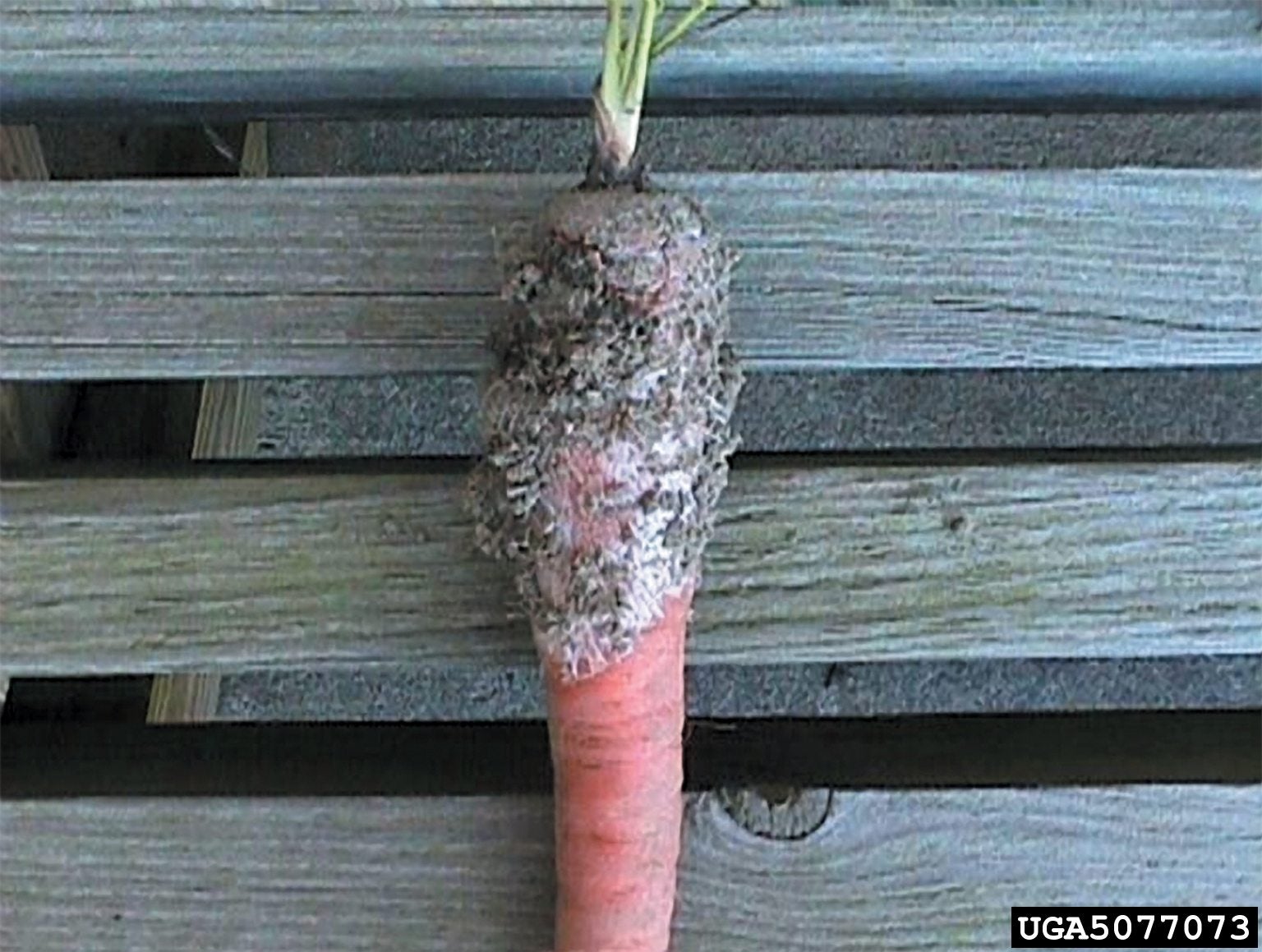Southern Blight On Carrots: How To Manage Carrots With Southern Blight

A carrot disease that coincides with warm temperatures close to harvest is called carrot southern blight. What is southern blight on carrots? Read on to learn how to identify carrots with southern blight and if there are any methods of southern blight carrot control.
What is Southern Blight on Carrots?
Carrot southern blight is a fungus (Sclerotium rolfsii) that is associated with warm temperatures following heavy rains. While a fairly minor disease in the home garden, southern blight is a more major problem for commercial growers. This is because the fungus affects a diverse group of crops (over 500 species!), especially those grown in tropical to subtropical regions and survives for long periods in the soil.
Symptoms of Carrots with Southern Blight
This fungal disease is characterized by the soft, watery decay of the taproot near or at the soil line. The tops of the carrots wilt and may yellow as the disease progresses and mats of white mycelium grow on the root and soil surrounding the carrot. Small resting structures (sclerotia) develop on the mats of mycelium. Wilting may be misdiagnosed as being caused by Fusarium or Verticullum; however, in the case of southern blight infection, the leaves usually remain green. Bacterial wilt may also be suspected, but unlike bacterial wilt, the tell-tale mat of mycelium around the carrot is a clear sign of S. rolfsii. Once the fungus is apparent on the soil’s surface, the carrot has already rotted.
Southern Blight Carrot Control
Southern blight is difficult to control since it does infect so many hosts and easily survives in the soil for lengthy periods of time. Crop rotation becomes part of an integrated method of controlling the disease. Along with crop rotation, use disease free or resistant transplants and cultivars when southern blight has been diagnosed. Deeply plow under or destroy any diseased plants. Be aware that even when plowing under, the soil-borne pathogens may yet survive and create future outbreaks. Amending the soil with organic fertilizers, composts, and biological controls may help control southern blight. Combine these amendments with deep plowing. If the disease is severe, consider solarizing the area. Sclerotia can be destroyed in 4-6 hours at 122 F. (50 C.) and in only 3 hours at 131 F. (55 C.). Water and cover the infected area of soil with clear polyethylene sheeting during warm summer months to reduce the number of Sclerotia, and thus the incidence of southern blight.
Gardening tips, videos, info and more delivered right to your inbox!
Sign up for the Gardening Know How newsletter today and receive a free copy of our e-book "How to Grow Delicious Tomatoes".

Amy Grant has been gardening for 30 years and writing for 15. A professional chef and caterer, Amy's area of expertise is culinary gardening.
-
 Get Ready For A Summer Of Hummers! Grow These Full Sun Hummingbird Plants and Flowers
Get Ready For A Summer Of Hummers! Grow These Full Sun Hummingbird Plants and FlowersIf you’re lucky enough to enjoy a sunny backyard, make sure you are maxing out on your pollinator opportunities and grow these full sun hummingbird plants and flowers
By Tonya Barnett
-
 12 Lush Alternatives To A Lawn For Sustainable Spaces
12 Lush Alternatives To A Lawn For Sustainable SpacesAlternatives to a lawn are beautiful and also beneficial to your local ecosystem and its pollinators. Explore our top picks for plants to replace grass.
By Tonya Barnett